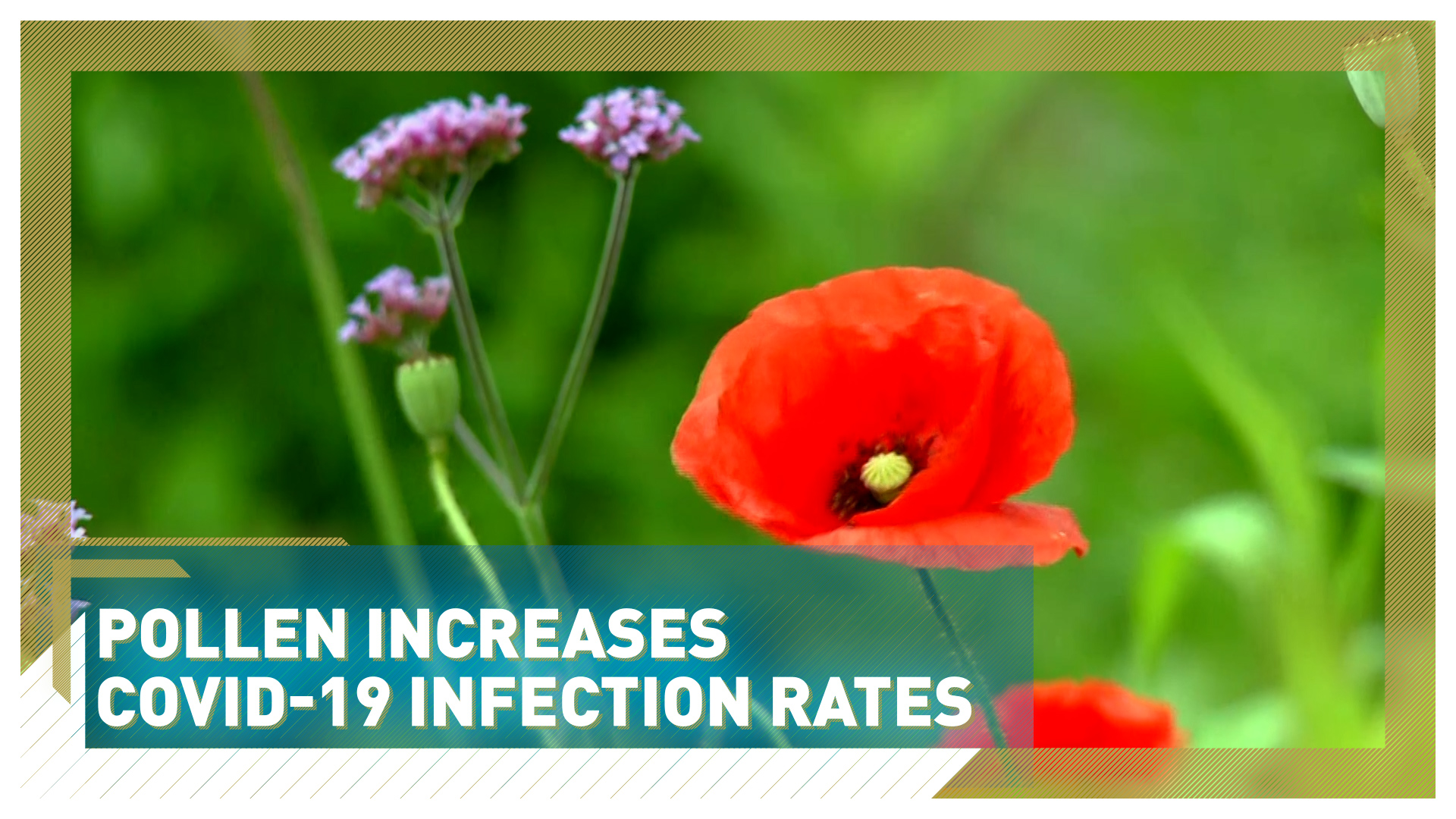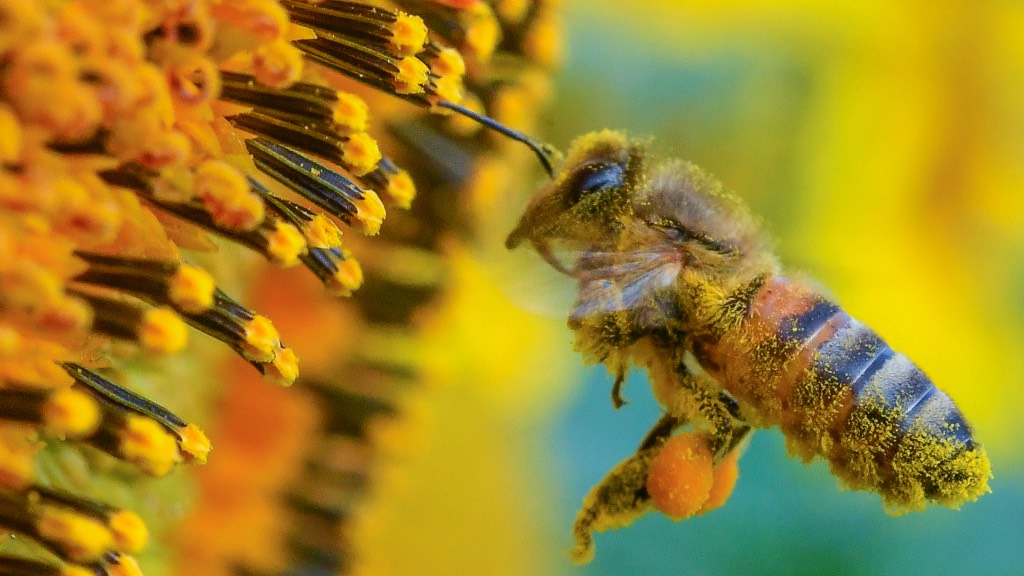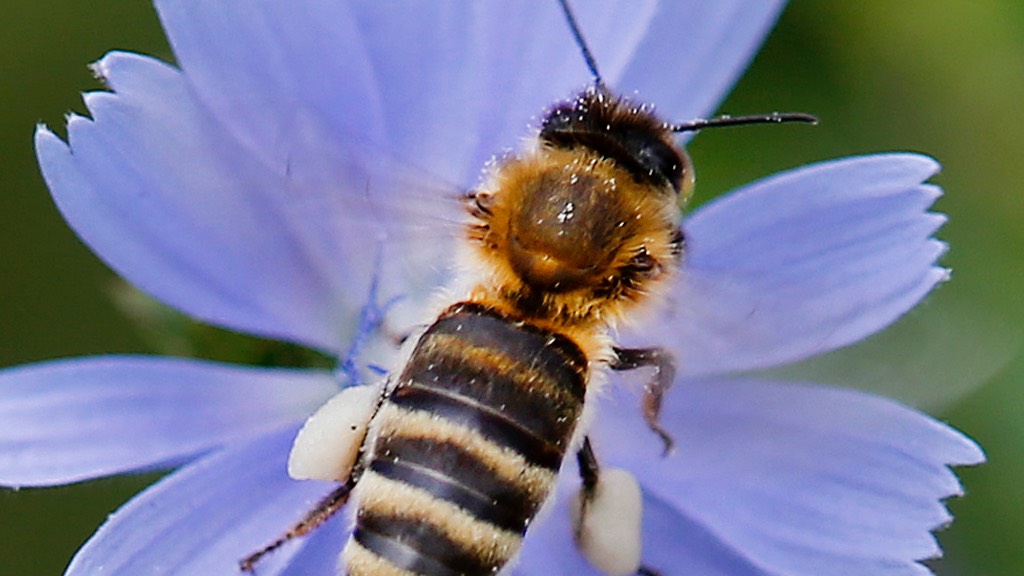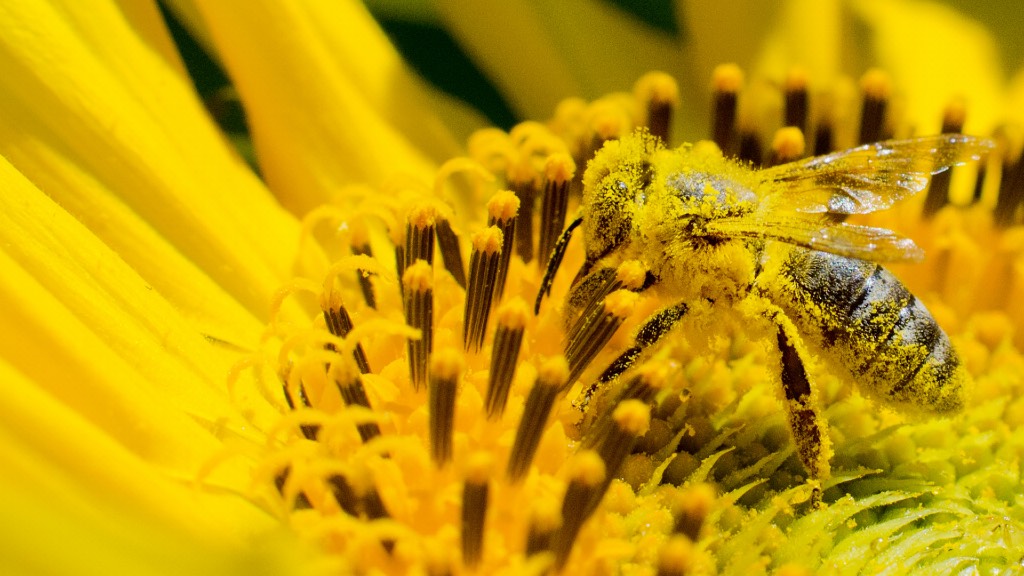02:36

Leading scientists In Germany have found a link between high pollen levels and COVID-19 infection rates.
The data collected showed airborne pollen weakens the body's immune response, which means the more pollen there is in the air, the higher the chance of someone catching a cold... or COVID-19.
These results were determined by what is believed to be the biggest such study of its kind, conducted by 154 international co-authors and headed by researchers at the Technical University of Munich (TUM) and the Helmholtz Zentrum Munchen.

Implementing lockdowns before the surge in airborne pollens helped reduce the spread of the virus. /Patrick Pleul/DPA/AP
Implementing lockdowns before the surge in airborne pollens helped reduce the spread of the virus. /Patrick Pleul/DPA/AP
The team analyzed pollen samples from 248 sites in 31 countries across all five continents collected between February and April of last year, just as much of the world was going into lockdown.
"We saw that pollen together with air temperature and humidity could explain a big proportion of infection rates, approximately 44 percent," said Athanasios Damialis, an aerobiologist who coordinated the study.
Implementing lockdowns and enforcing masks before the surge in airborne pollens helped to substantially reduce the spread of the virus, added Damialis.
"We saw that lockdown was very efficient in practically halving the infection rates, even with the same amount of pollen. The lockdown itself was efficient not necessarily because of its strictness, but when it was adopted early enough," he explained.

In some countries, there was a strong correlation between pollen particles in the air and COVID-19 infection rates. /Michael Probst/AP
In some countries, there was a strong correlation between pollen particles in the air and COVID-19 infection rates. /Michael Probst/AP
Pollen, not the only environmental factor
The effects of other confounding factors needed to be considered in the results says Stefanie Gilles, the head of environmental immunology at the University of Augsburg, where the samples were studied.
"We also observed effects of different environmental factors, like temperatures and humidity that act in synergy with pollen," she told CGTN Europe.
"So pollen is not the only environmental factor that may be modulating the infection."
Differing pollen seasons, longer pollen periods and a higher abundance of it in the air due to climate change could all be contributors to why results differed between countries.
"In some [countries], it [the correlation between pollen and COVID-19 infection rates] was very strong, such as in Spain and Switzerland," admitted Damialis.
"In others, we didn't see it. For example, the colder, northern, continental climates, like the Scandinavian countries, they didn't seem to have yet, as I speculate, a pollen effect regarding infection rates."

Those in high-risk groups could protect themselves further by watching pollen forecasts. /Julian Stratenschulte/DPA/AP
Those in high-risk groups could protect themselves further by watching pollen forecasts. /Julian Stratenschulte/DPA/AP
No reason for panic
To further strengthen their findings, the study also showed that where less pollen was found during the months the samples were collected, less cases of the virus were discovered.
As for those with pollen allergies, also known as hay fever, Gilles said there is no evidence to show they are at an increased risk of developing COVID-19, nor is there any reason for panic.
"We saw a statistical correlation and not a causality," she said. "Pollen is not the driver of infection. What is needed is the virus, pollen is not a carrier of the virus."
People are recommended to continue wearing dust filter masks at all times of the year but those in high-risk groups could protect themselves further by watching pollen forecasts.
Germany has been under varying lockdown measures since early November and as another pollen season begins, the country has announced another extension of restrictions until April 18 – a decision that could again have a positive effect on infection rates.
Video editor: David Bamford

